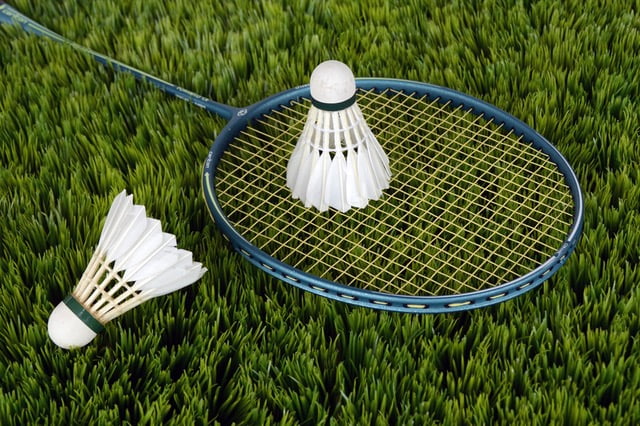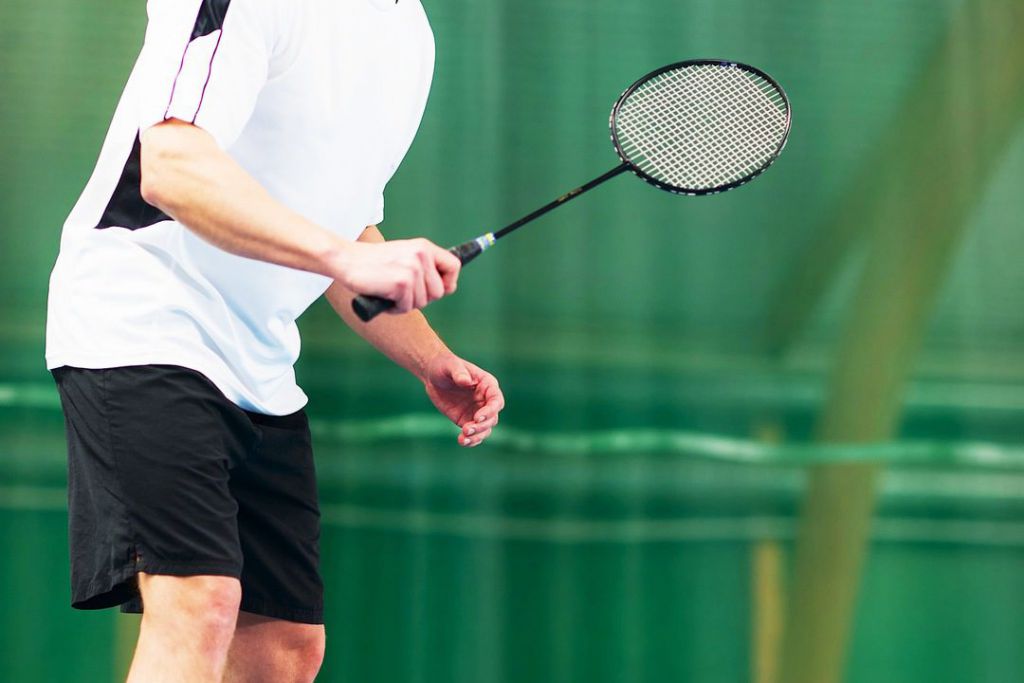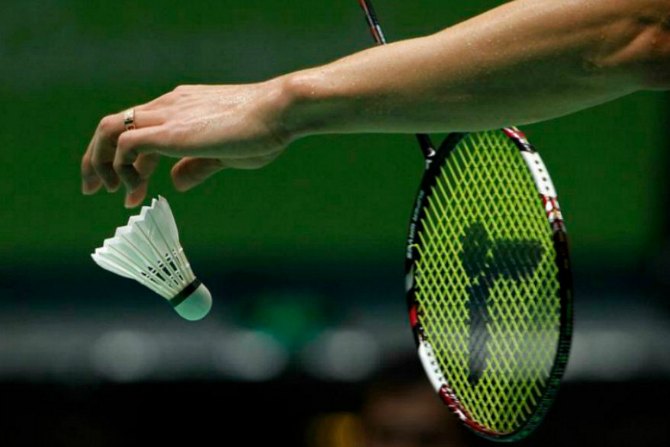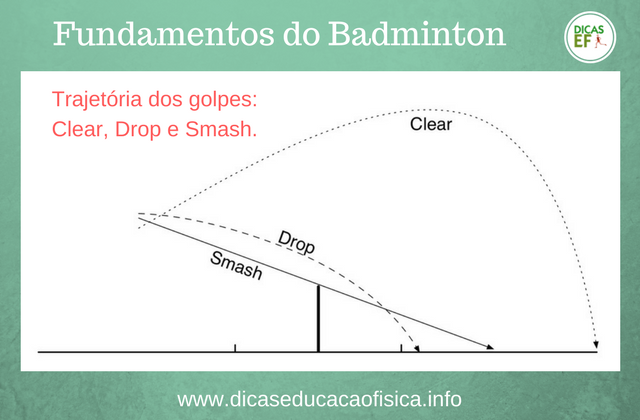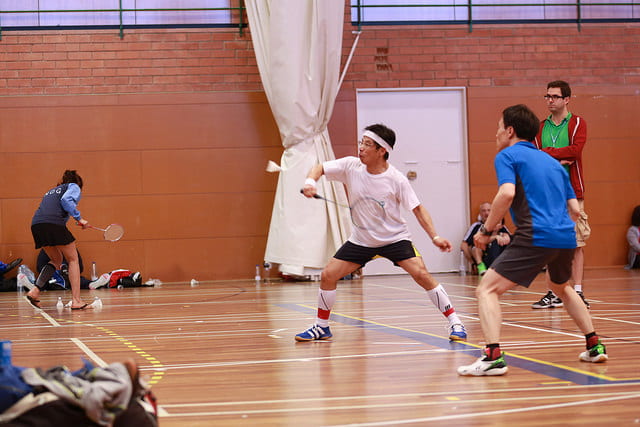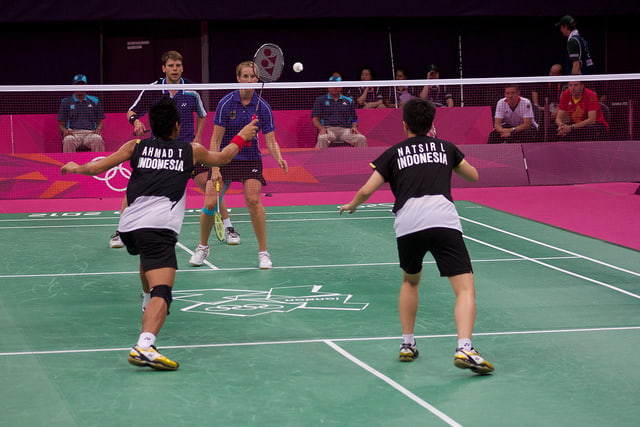Introduction: The Fundamentals of Badminton
In this post, Dicas Educação Física has prepared a simple explanation of the fundamentals of badminton, with all the main techniques used in this racket game. And don’t worry, you’ll see that badminton is no “seven-headed monster”. Click here for more details on Badminton.
In this content we’ll explain the techniques of badminton and how to execute the serve, the grip, the clear, the drop or drop-shot, the smash, the drive, the lob and the net-shot or net-drop in badminton.
What is Badminton?
Badminton is an Olympic sport that is very popular on the Asian continent. Badminton has some similarities to tennis, but instead of a ball you use a shuttlecock to play badminton.
What are the Technical Fundamentals of Badminton?
The technical fundamentals of badminton are the most important parts of the game, the movements and strokes used by badminton players. The basic fundamentals of badminton are eight: the serve, the grip, the clear, the drop or drop-shot, the smash, the drive, the lob and the net-shot or net-drop.
Badminton racket handle
The correct grip of the badminton racket is made by holding the racket as if you were shaking someone’s hand. The wrist joint plays a very important role in badminton. Unlike in tennis, where the wrist remains rigid, in badminton the wrist must be loose in order to hit the ball.
- The Badminton Racket Handle
The Difference Between Forehand and Backhand in Badminton
The forehand is when the badminton player hits the shuttlecock with the palm of the hand facing forward or towards the badminton net. The Backhand is when the badminton player hits the shuttlecock with the “back” of the hand facing forward, towards the net.
Almost all strokes or fundamentals can be performed from the forehand or backhand.
The Badminton serve
The serve in badminton, also called the service, must be made in a diagonal trajectory, i.e. a cross trajectory. There is a space on the badminton court, called the service area, where the serves must be made.
There are a few rules that the server must follow in badminton:
a) keeping both feet or part of them on the ground in an immobile position;
b) hit the base of the shuttlecock first;
c) hit the shuttlecock below the waist line;
d) touch the shuttlecock below the line of the hand holding the racket;
e) don’t deceive the opponent; you have to keep the racket moving continuously.
Clear in Badminton
The clear is a basically defensive stroke, one of the most basic fundamentals of badminton. It occurs when the shuttlecock is above and in front of the badminton player’s head and he hits it with his racket towards the back of his opponents’ court.
Although it is most often used in defense, Clear can also be used to attack. This happens when the player realizes that his opponent is positioned waiting for another type of blow. In this way, the player surprises his opponent, who doesn’t have time to reorganize himself on the court to make a proper save.
The Badminton Drop
The Drop is an attacking stroke in Badminton, the aim of which is to throw the shuttlecock very close to the net, making it difficult for your opponent to defend. The speed of the hit can vary, but if the player manages to be quick, it will be difficult for the opponent to reorganize to make the save.
The Badminton Smash
The smash is the fastest and most important attack in badminton. It is executed by striking the shuttlecock with precision and force, from top to bottom, like a volleyball slice. The smash can be performed with or without a jump, depending on the height of the shuttlecock at the moment the strike is made.
The Drive in Badminton
The Drive is a stroke performed when the shuttlecock is at half height, more or less at the height of the badminton player’s shoulders. It is executed as if the player were “whipping” the shuttlecock. Most commonly used in doubles matches, the intention of the drive is to throw the shuttlecock into an “uncovered” spot on the opponent’s court.
- Example of a Backhand Drive
Lob in Badminton
Lob is used in badminton when the shuttlecock is thrown very close to the net. To defend himself, the badminton player hits the shuttlecock from the bottom up, so that it gains height and falls to the back of the opponent’s court in a parabolic trajectory.
The difference between the Lob and the Clear is that the Lob is executed from the bottom up and the shuttlecock has to gain height, unlike the Clear, which is a straight stroke.
The fundamental characteristics of a good Lob are good height, good depth and good recovery on the court after the hit.
The net-shot in badminton
Like Lob, Net-shot is one of the Badminton fundamentals used when the shuttlecock is thrown close to the net. The difference between them is that in the Net-shot the aim is to return the ball close to the net, making it difficult for the opponent to defend. Another difference between Net-shots and Lob is that Net-shots can be performed by hitting the shuttlecock from both bottom to top and top to bottom.
After a net-shot, it is important that the badminton player recovers his position on the court quickly, as the opponent’s counter-attack tends to be swift.
“Net-Shot is also called Net-Drop.”
More about Badminton
- VIDEO: Badminton fundamentals
- History of Badminton
- Badminton court
- Basic Badminton Rules
- History, Rules and Fundamentals of Badminton
